In this issue
- Out and about in New England
- Clean energy videos
- Toxic flame retardants
- Climate strike
- A new reason for this work
- Partnering with students in Connecticut
- Urging action on PFAS
-
DocumentNew England Currents - Fall 2019.pdf (4.14 MB)
Clean Water Action Out and About the Region
It’s fall in New England — the leaves are turning, the pumpkins are out…and our Clean Water team has been out in communities across the region, too. And we love it! While we can all access more information than ever before and connect instantly online, Clean Water Action continues to commit to personal relationships and building political power person-to-person. We’d love to come to your community, too: Reach out to
Massachusetts
Watch our new videos and take action!

Environmental justice (EJ) communities — low-income communities, people of color and immigrant populations — are paying the deepest price for our nation’s addiction to fossil fuels. EJ communities bear the physical burden of pollution, with high rates of asthma and cardiovascular disease, and also face the greatest barriers to accessing clean energy that reduces pollution and saves customers money on energy and healthcare bills.
That’s why Clean Water Action is working to bring clean power to EJ communities. This fall, Clean Water released two new videos to call attention to this problem:
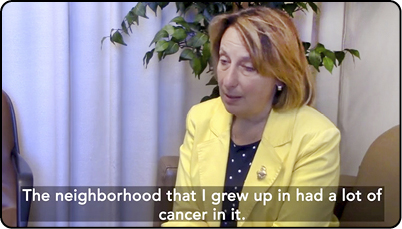
▶ Clean Energy for All: In this video, our partners in the Green Justice Coalition from Chelsea, Holyoke and Springfield, Massachusetts — and other allies working in solidarity — share their perspectives and guidance on the environmental justice challenges of today:
Communities that have borne the brunt of fossil fuels and life-threatening pollution should be a priority in the transition to a green economy;
Folks on the ground have the solutions, with enough resources they will leap forward toward a society powered by renewable energy;
The government must respond to community knowledge and strategies cannot be developed “above” communities or without their meaningful involvement.
▶ Toxic Communities and the Drive for Clean Air (in memorium): Coal power plants…leaking landfills…incinerators burning toxic trash…for years, Massachusetts residents have fought against industrial facilities across the state that pollute air and water and impact our health. The legacy of pollution is long and painful. In many cases, activists and communities are winning. But there’s still more work to do. Massachusetts has shut down its last coal plants, but residents are still fighting incinerators and other sources of environmental harm. Clean Water Action interviewed leaders across the state about their stories of these struggles. These “extraordinary ordinary” people show just how incredible the work of everyday residents can be.
Clean Water Action dedicates this video to the memory of Pauline Rodrigues, from Somerset Massachusetts, who is featured in the film but sadly died of cancer before it was released.
TAKE ACTION! Help Massachusetts do more to expand solar to low-income communities
Massachusetts’ solar program isn’t working for many. The so-called “SMART” program has not resulted in any noticeable number of low income solar projects. Thankfully, there is an opportunity to fix this. The Department of Energy Resources is currently reviewing the program and has been directed to pay extra attention to low and moderate income solar access. Take action here.
Massachusetts
Added for “Safety” But Causes Harm

I’m in many products in your home. I get into dust and people’s bodies. I’m supposed to keep you safe, but you’re safer without me. I cause harm, especially to kids and firefighters. What am I?
If you guessed “toxic flame retardants” then you are right.
Toxic flame retardants are added to highchairs, car seats, nursing pillows, furniture, mattresses, carpet pads, electronic equipment (including toys), and many more common household products. These chemicals have been linked to cancer, nervous system damage, developmental delays, and disruption of our hormone system. They do not stay put in the products; they get out into the dust in our homes and the air that we breathe, and ultimately into our bodies.
Children’s developing bodies are much more vulnerable to the health problems associated with flame retardants than adults. Their tendency to touch their faces and mouths add to the danger and put them at even greater risk. Firefighters are exposed to flame retardants when they go into burning buildings. When the chemicals burn, they create toxic smoke and soot, contributing to the high rate of cancer among firefighters.
For decades, chemical flame retardants have been used in ways that are ineffective at slowing the spread of fire. Fortunately, there are ways to make products more fire safe and less toxic, like using less flammable materials.
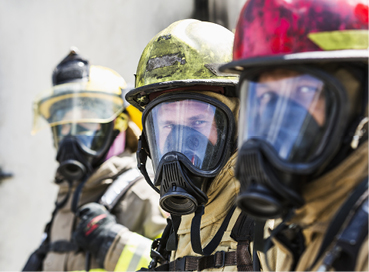
That’s why states across the country have passed laws to ban toxic flame retardant chemicals in certain products. In New England, New Hampshire, Maine, Vermont and Rhode Island have all taken action. Massachusetts is next!
In Massachusetts, the Children and Firefighters Protection Act has been filed to ban 11 toxic flame retardants in children’s products, household furniture, mattresses, carpeting and curtains and other window coverings. H.1230 is sponsored by Representative Marjorie Decker (D-Cambridge) and S.2349 is sponsored by Senator Cynthia Stone Creem (D-Newton). S.2349 passed the Senate in September! Both are now in the House Committee on Ways and Means.
Take Action! Write to your State Representative and Governor Baker and urge them to pass the Children and Firefighters Protection Act this year!
In fact, when the House passes the bill, it will not be the first time. The Massachusetts Legislature enacted a flame retardant ban on January 1st, but Governor Baker chose not to sign the bill, effectively vetoing it. Don’t let this happen again! Write a letter today!
Massachusetts
Clean Water at the #ClimateStrike
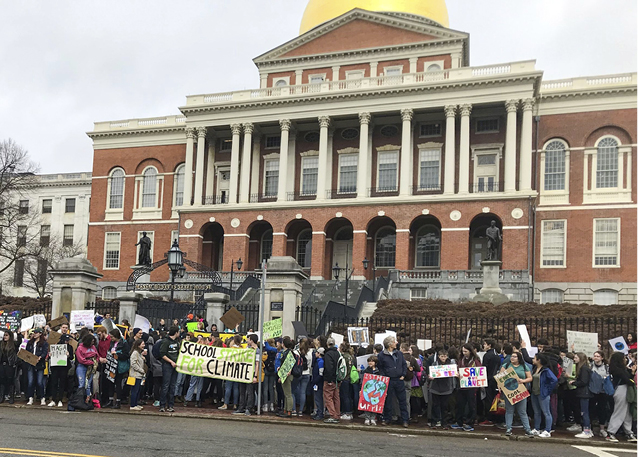
On September 20, City Hall Plaza in Boston was a great place to be. The Youth Climate Strike, organized by youth and open to all, filled the expanse with colorfully-dressed people, a flurry of activity, handmade signs, and passionate commitment to change. CWA staff member Laura Spark arrived early, with daughters Lea and Naomi, age 16, who quickly found friends from school up near the stage. They set up a Clean Water Action table with information about some of our clean energy priorities, and asked people to write on giant sticky notes, “What do you want Massachusetts leaders to do this year about climate change?”
Meanwhile, members of Clean Water’s Youth Action Collaborative (YAC), who had hosted two prior prep sessions with other young people from allied environmental justice groups, were prepping their climate justice contingent. They gathered friends and allies together with the signs and bucket drums they had prepared, and waited eagerly for the march to begin.
Fifty miles away, Clean Water’s Vick Mohanka was joining the strike actions in Worcester, a “gateway community” and New England’s second-largest city, with its own lively organizing scene.
Back in Boston, Clean Water’s table was filling up with sticky notes as interesting ideas began pouring in from passers-by: “Leave some planet left for us!” wrote one 13-year old. Another young person drew an earth and wrote “I’d rather skip school than skip out on my future”, and another wrote, “Listen to science.”
There were lots of specific ideas, reflecting bills that have already been introduced at the State House: “I want Mass leaders to #putapriceonit! They need to do something now!” Also, “Stop talking and start acting: improve public transit, stop building fossil fuel infrastructure, 100% renewable, and environmental justice.”
Then there were concrete suggestions, reflecting policies haven’t yet been introduced: “Pass a Massachusetts Green New Deal,” and “Only allow zero emission vehicles within city limits!”
And questions: “What would the Lorax do?”
After nearly 2 hours of rallying behind the encouraging words of youth organizers, Mayor Marty Walsh, former EPA Director Gina McCarthy, environmental justice leader Rev. Mariama White-Hammond, and others, the crowd began marching to the State House a few blocks away.
Members of the YAC, allies from other groups and assorted friends passing by joined CWA staff behind a large banner calling for climate justice. As their bucket drums came to life, people around the group began dancing and chanting to the beat. A friend from the Ujima Project improvised a chant making clear that climate justice includes race, economics, food access and other areas that often get sidelined in the environmental movement. At one point, the lively group stopped for a long moment in the middle of one of the city’s busiest intersections and, feeling the surge of people power all around them, simply hooted and banged on drums in a primal rallying cry.
Rallies energize people and help create a sense of common purpose. But, they don’t create change on their own. That’s why after September 20, the work of the Youth Strike will continue, with Sunrise, local environmental justice partners, labor and other groups, to make sure that future generations’ voices, interests and, soon, votes cannot be ignored.
Rhode Island
A New Reason for This Work
By Johnathan Berard, Rhode Island State Director
As I walked in to Burnside Park on the morning of Friday, September 20th, I was struck. Awed. Inspired.
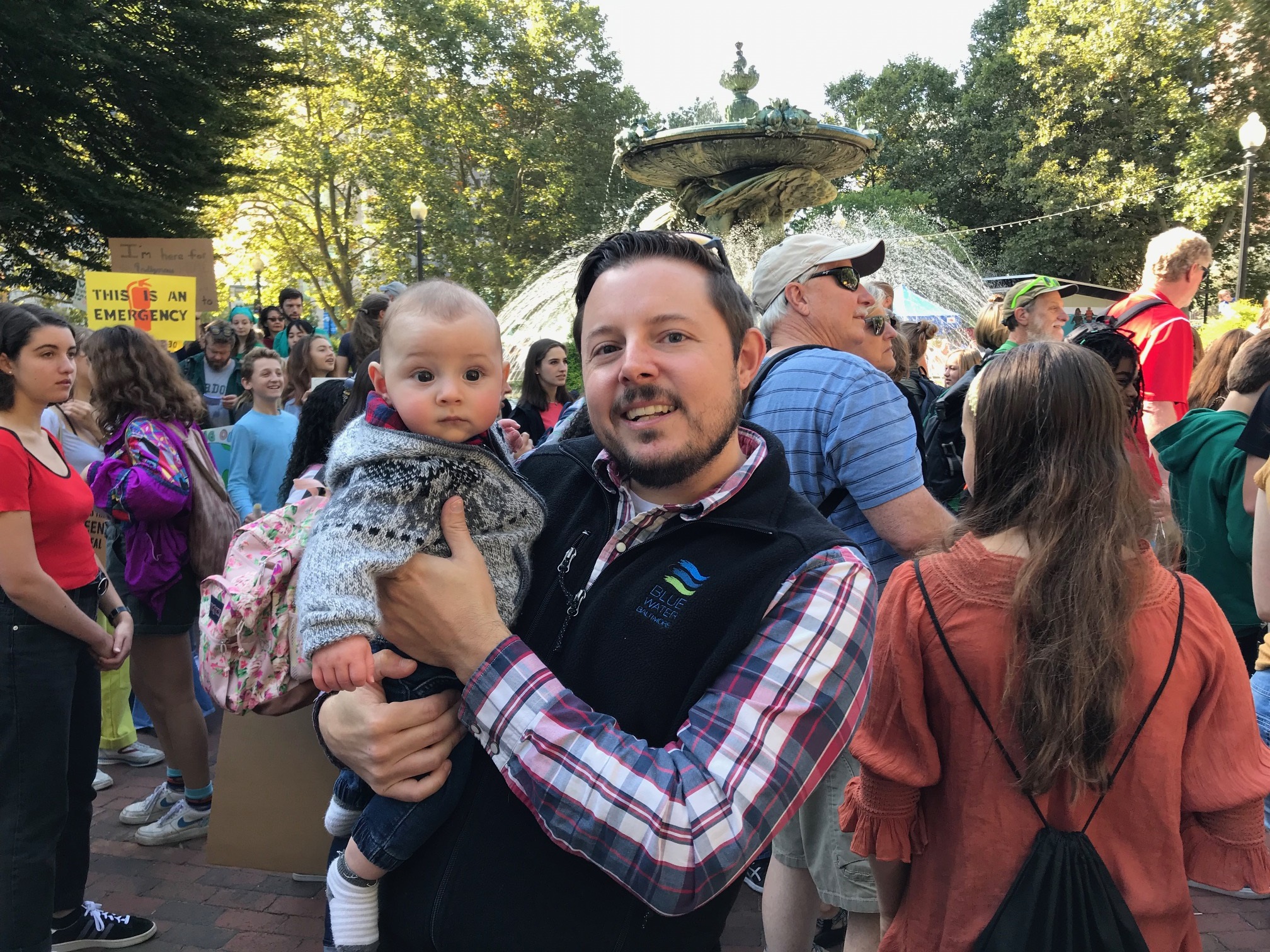
I began to tear up a little.
On that morning, as was happening in communities across the entire globe, a group of activists, led by and consisting mostly of young people, had gathered to bring attention to THE defining issue of our time — the climate crisis.
Entire classes of school children huddled together, signs bearing the name of their schools along with please to ‘Act on Climate’ held aloft, chanting. Others bore signs that read ‘Skolstrejk för Klimatet’, written in the same black block-print that Greta Thunberg had made famous during her solo protest in front of Swedish parliament in 2018. Buses arrived and more kids filled the plaza, adults in tow, not so much supervising or leading as merely chaperoning for legal reasons.
There was an energy to this crowd, one that I had not felt at any other rally I had ever attended. It was intoxicating and, despite all of the things going wrong in our world, I felt hopeful in this moment.
This feeling was amplified by the fact that I had brought with me to the march my five-month-old son. As much as this was a strike for global action on climate, this was a rally for him.
I have been a professional environmental activist for about a decade. Previous to that, the environment was still something that I fought to protect by participating in neighborhood cleanups, conserving water, and voting for candidates for whom environmental protection was a top priority. I was taught from an early age that we are stewards of our environment and that we must use the power that nature has, for better or worse, bestowed upon us to maintain the ecological balance of the planet that we inhabit during the short time that we are here.
This has been the value that has driven me to do the work that I do — to protect those and that which may not be able to do it on their own. Whether that is fighting for stronger regulations to protect drinking water, working to eliminate the scourge of single-use plastic pollution, or advocating for policies to ensure that vulnerable communities do not suffer further from environmental injustices, I have done as much as I can to try to leave this world a better place than when I came into it.
Then my son arrived and now my work has a whole new meaning. They say (somewhere on the internet) that when you have a child, you now wear your heart outside your body. Everything you do is to nurture and protect as much as you can this living thing made from a part of your own self. We make sure that our homes are baby-proofed. We teach our kids not to touch a hot stove and to look both ways when crossing the street. We comfort them when they are sick or tired or crabby or sad.
But how do we make sure that the world they inherit will be just and livable? To be honest, we as a society have done a pretty terrible job. Which is why we see youth taking their futures into their own hands. They are tired of words but no action. They are scared that the sea will claim their communities or that rising temperatures will force mass migration. That the changing global climate will endanger the world’s ability to produce enough food. That thousands of species will go extinct. That the oceans will fill with plastic. That our leaders will continue to put profit and growth over human well-being and ecological balance.
The world I leave will be the one that my son, now one of these youths (even if he doesn’t know it yet), will be forced to live with. Now that he is here, it makes my work, to protect our waters and air and forests, to ensure that the world he will inherit is fair and peaceful and sustainable, all that more urgent. As I spent the morning of the climate strike chanting and marching, him strapped to my chest in his carrier and loving every second of it, I recommitted myself to this work. For my kid. For everyone’s kids.
Connecticut
Working With Students to Protect Water
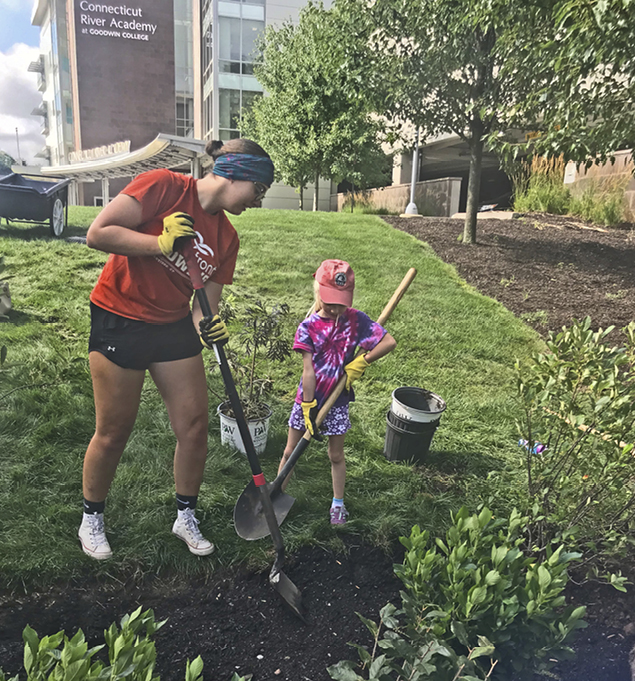
One of the best things about Clean Water Action is the opportunity to meet and partner with so many wonderful people, on a variety of issues that protect our water and reduce pollution. A highlight this year was working with students and teachers at the CT River Academy to design and build a rain garden that will reduce stormwater runoff into the Connecticut River.
Thanks to Clean Water Action and the Conservation Law Foundation, a Clean Water Act citizen suit against an auto body shop in East Hartford impacting the Hockanum River resulted in funding for a clean water project in the area. We were thrilled to partner with Michele Saulis, Environmental Theme Coach, and students in the fall of 2018 to discuss the idea. Victoria, a senior student, jumped at the chance to lead the initiative with the support of Michele and other faculty.
Over the fall and winter, students learned about the value of rain gardens, rain garden design and participated in a trip to UCONN to learn more from a leading environmental professor on the importance of design, drainage, types of plants and all the engineering that goes into an effective rain garden.
In late winter and early spring, appropriate sites for the garden were identified and Victoria and the students met with planning officials at the school and in the town of East Hartford to obtain the necessary permission. CT Director, Anne Hulick attended a class where students were required to study the value of rain gardens, native plants and pick which plant species would be best suited for the chosen site. It was wonderful to see the amazing storyboards with the student’s choices and location of the plants that would be best suited for the needs of pollinators and minimizing stormwater runoff!
Finally, the big day arrived! Victoria and the students worked with a local nursery to obtain the chosen plants and worked with the school’s groundskeeper to layout and dig the garden. Michelle recruited incoming 9th grade students to come to the campus and help plant. The students learned from the groundskeeper about how to carefully get the plants out of their pots, care for the roots, lay out the design and then dig holes and plant. We learned from the engineers about why the stormwater drain had to be raised up to maximize rainfall going to the plants before it overflows to the drain itself. It was a beautiful day and wonderful to see this student led project happen. We can’t wait for more projects like this.
Urging Comprehensive Action on Toxic “Forever Chemicals” PFAS

Clean Water Action is leading efforts in Connecticut to take comprehensive action on the class of PFAS chemicals, also known as the “forever chemicals”. In the 2019 legislative session, Clean Water Action introduced a bill that would restrict firefighting foam contained PFAS. The bill did not pass, since many legislators were unfamiliar with the health and environmental risks associated with these chemicals. Ironically, four days after the session ended, a tragic spill of 40,000 gallons of firefighting foam leaked from a private hangar at Bradley International Airport into the Farmington River. Governor Lamont convened an interdisciplinary workgroup to address clean-up, pollution prevention and health and environmental impacts from PFAS contamination in July. Since then, we’ve participated in numerous press events and workgroup meetings calling for comprehensive action. Formal comments submitted to the Governor’s workgroup included:
— banning the use of firefighting foam containing PFAS
— restricting the procurement, sale and distribution of food packaging, food service ware and textiles that contain PFAS
— regulating the entire class of PFAS (approximately 4700 chemical compounds)
— establishing a health protective drinking water standard (MCL) of 1ppt.
— requiring on-going monitoring of water bodies and other sites that have strong potential to have PFAS contamination.
The Governor issued final recommendations on November 1st and we’re already gearing up for on-going work in the 2020 Legislative Session. Follow our work on